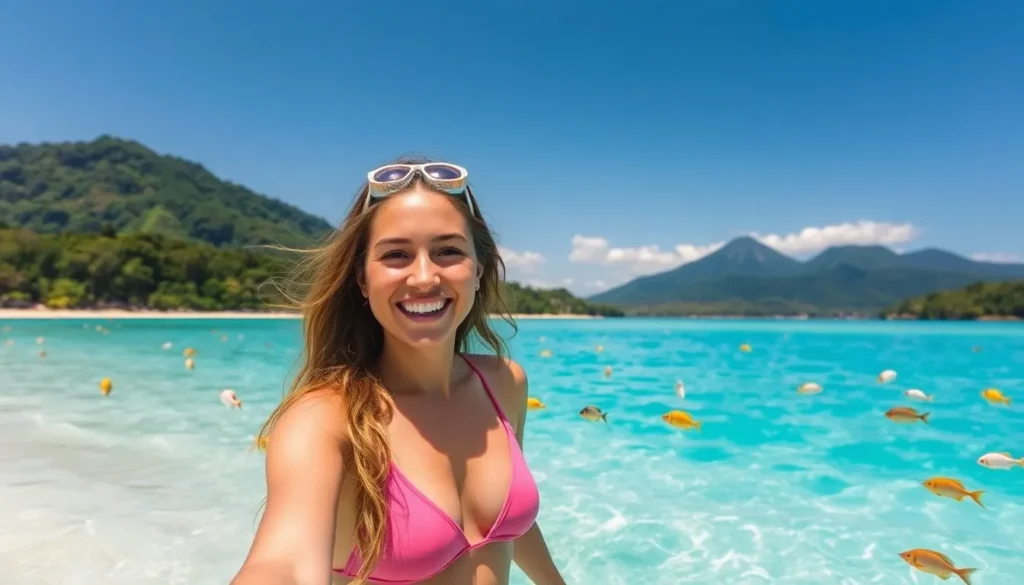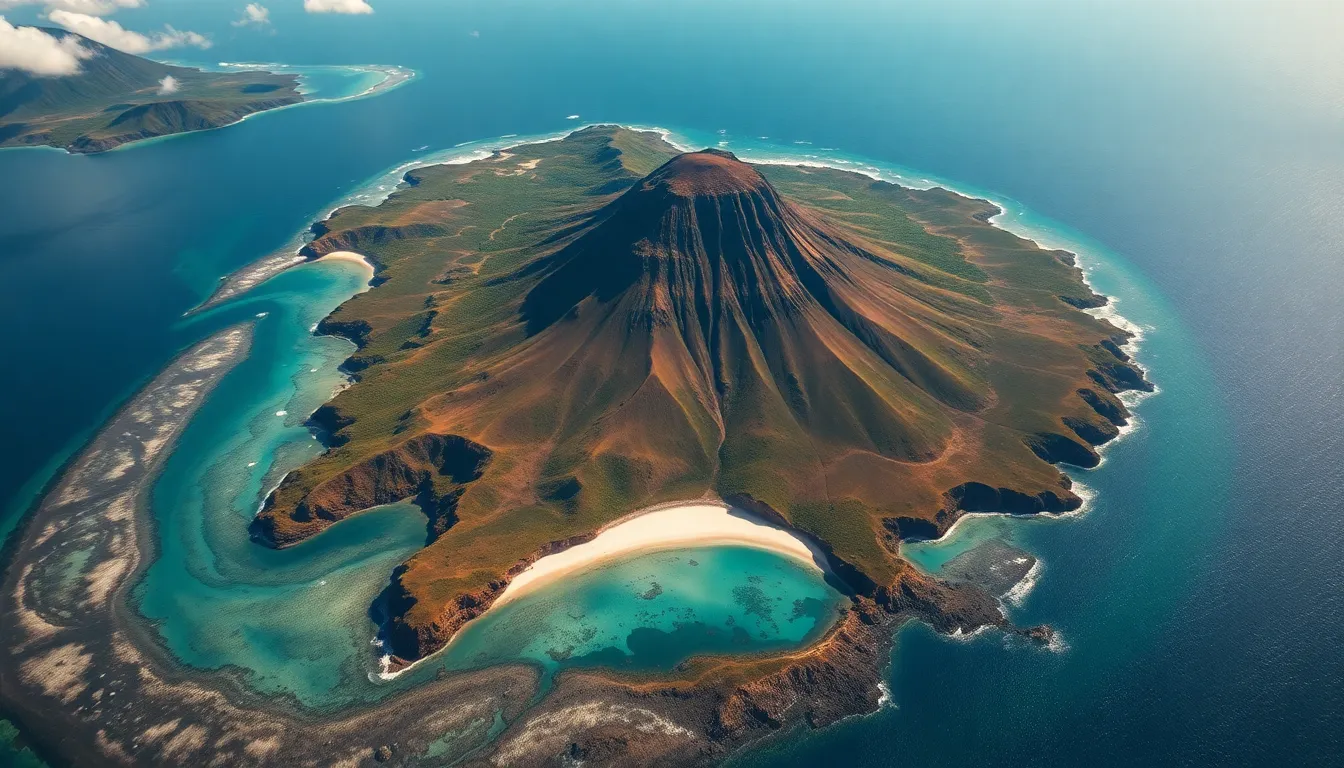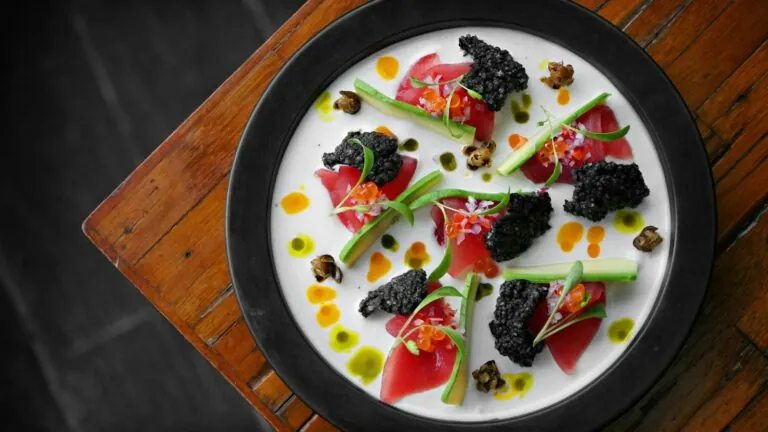Table of Contents
ToggleNestled in the azure waters of the Pacific, Yukevalo Island stands as one of nature’s best-kept secrets. This tropical paradise combines pristine white beaches, lush rainforests, and vibrant coral reefs that would make even the most seasoned travelers drop their jaws faster than their luggage.
Visitors to Yukevalo don’t just find a destination—they discover a lifestyle. From snorkeling with kaleidoscopic marine life to lounging under swaying palms with a coconut cocktail (complete with those tiny umbrellas!), this island offers experiences that transform ordinary vacations into Instagram-worthy adventures that’ll make friends back home turn an envious shade of green.
Discovering Yukevalo Island: A Hidden Paradise
Yukevalo Island sits nestled in the azure waters of the Pacific, just 150 miles south of the equator. Pristine white sand beaches stretch for 12 miles along its coastline, creating a stark contrast against the turquoise lagoons that surround the island. Lush rainforest covers 70% of the island’s interior, home to 35 species of exotic birds and rare flora found nowhere else on Earth.
Visitors discover secluded coves accessible only by kayak or small boat, offering private swimming spots away from the main beaches. Crystal-clear waters maintain a consistent 80°F temperature year-round, creating perfect conditions for swimming, snorkeling, and diving. Marine enthusiasts encounter vibrant coral gardens housing over 250 species of tropical fish, sea turtles, and gentle manta rays.
The island’s central mountain peak rises 1,200 feet above sea level, providing panoramic views that extend 30 miles on clear days. Local guides lead daily excursions to hidden waterfalls, including the spectacular 90-foot “Veil of Tears” cascade tucked within a lush valley. Traditional villages dot the eastern coast, where visitors can experience authentic cultural presentations and sample local cuisine prepared using techniques passed down for generations.
| Activity | Duration | Key Features |
|---|---|---|
| Snorkeling Tour | 3 hours | Coral gardens, tropical fish, underwater caves |
| Rainforest Trek | 4 hours | Endemic birds, medicinal plants, waterfall swim |
| Cultural Village Visit | 2 hours | Traditional dance, craft demonstrations, local feast |
| Sunset Kayaking | 1.5 hours | Bioluminescent bay, sea caves, coastal views |
Yukevalo’s remote location has preserved its natural beauty, making it one of the Pacific’s best-kept secrets for travelers seeking an authentic island experience away from commercialized tourist destinations.
The Location and Geography of Yukevalo Island
Yukevalo Island sits in the remote southwestern Pacific Ocean, approximately 150 miles south of the equator. Positioned between the Solomon Islands and Vanuatu archipelago, this hidden paradise spans 28 square miles of diverse terrain, featuring both volcanic highlands and coral-formed lowlands that create a unique ecological sanctuary.
Climate and Weather Patterns
Yukevalo experiences a tropical maritime climate with two distinct seasons. The dry season runs from May to October with average temperatures of 82°F, making it ideal for tourists seeking sunny beach days. Between November and April, the wet season brings brief but intense afternoon showers, higher humidity, and temperatures reaching 88°F. Ocean currents surrounding the island maintain a pleasant water temperature of 79-84°F year-round, perfect for swimming and water activities. Trade winds from the southeast provide natural cooling during hotter months, while the island’s location shields it from major Pacific cyclone paths, ensuring relatively stable weather conditions compared to other tropical destinations.
Unique Topographical Features
Yukevalo’s landscape combines dramatic volcanic formations with coastal beauty. Mount Kahele, rising 2,340 feet at the island’s center, serves as both a navigational landmark and sacred site for indigenous inhabitants. The eastern coastline features limestone cliffs dropping 200 feet to the ocean, creating spectacular viewpoints and natural sea caves. Three freshwater lakes in the northern region support unique ecosystems, including the rare blue lotus flower found nowhere else in the Pacific. Ancient lava tubes form an underground network across the western plateau, while seven distinct microclimates exist within the island’s modest area. Limestone sinkholes dot the southeastern region, some connecting to the ocean through underwater passages that attract experienced cave divers from around the world.
The Rich History of Yukevalo Island
Yukevalo Island’s history spans thousands of years, evolving from an isolated indigenous sanctuary to a culturally diverse paradise. Archaeological evidence reveals human settlement dating back to approximately 3,500 BCE, making it one of the earliest inhabited islands in this region of the Pacific.
Indigenous Populations and Heritage
The Vahelo people first settled Yukevalo Island around 3,500 BCE, establishing thriving fishing communities along the coastal regions. Archaeological excavations near Mount Kahele uncovered ceremonial sites featuring stone carvings and artifacts dating back 2,000 years. These indigenous inhabitants developed sophisticated navigation techniques, enabling trade networks with neighboring islands across 200 miles of open ocean. Vahelo culture centered around a rich oral tradition with 72 distinct legends explaining the island’s formation and their spiritual connection to Mount Kahele. Traditional Vahelo practices included elaborate tattooing traditions, complex dance ceremonies performed during seasonal transitions, and sustainable farming methods that protected native ecosystems. Many present-day island families trace their lineage directly to these original settlers, preserving ancient languages and customs through community educational programs.
Colonial Influence and Development
European contact with Yukevalo Island began in 1792 when Captain James Morrison’s expedition mapped the coastline during a Pacific voyage. Spanish missionaries arrived in 1824, establishing the island’s first permanent foreign settlement at Port Mariana on the western coast. British colonial administration took control in 1867, introducing commercial sugar plantations that transformed 40% of arable land and brought workers from India and China. This colonial period left lasting architectural influences, evidenced by 12 preserved colonial buildings in the main settlement. Japanese forces briefly occupied Yukevalo during World War II, constructing military installations whose ruins remain visible along the northern cliffs. The island gained independence in 1972 following a peaceful transition, establishing a governing council that blends traditional leadership structures with modern democratic principles. Tourism development began cautiously in the 1990s, carefully balancing economic growth with cultural preservation.
Wildlife and Natural Wonders
Yukevalo Island boasts an extraordinary ecosystem that ranks among the most diverse in the Pacific region. This biological haven harbors numerous endemic species that have evolved in isolation, creating a living laboratory for scientists and a paradise for nature enthusiasts.
Endemic Species and Biodiversity
Yukevalo’s isolation has fostered the evolution of 147 endemic plant species found nowhere else on Earth, including the striking blue-petaled Vahelo orchid that blooms only during full moons. The island’s interior rainforest shelters 35 bird species, with the vibrant Yukevalo honeyeater and the rare crested parrot drawing ornithologists from around the globe. Mammalian life includes the diminutive Yukevalo flying fox, a fruit bat with a wingspan of just 10 inches that plays a crucial role in pollinating native plants. Five endemic reptile species inhabit the island, most notably the electric blue skink that scurries across forest floors. Conservation efforts led by the Yukevalo Biodiversity Institute focus on protecting these unique species from introduced predators and habitat loss, establishing three nature preserves covering 40% of the island’s total land area.
Marine Life and Coral Reefs
Yukevalo’s surrounding waters contain some of the Pacific’s most pristine coral ecosystems, with 87% of reefs classified as “extremely healthy” in recent marine surveys. These vibrant underwater gardens support over 350 fish species, including the endemic Yukevalo angelfish with its distinctive gold and purple markings. Green sea turtles nest on the island’s eastern beaches, laying approximately 2,000 eggs annually during the October breeding season. The reefs feature rare black coral formations along the northwestern coast, descending to depths of 120 feet where hammerhead sharks gather in schools of 20-30 during summer months. Marine biologists have documented 24 species of nudibranchs (sea slugs) unique to these waters, their brilliant colors attracting underwater photographers. Local conservation initiatives have established a 5-square-mile marine protected area where fishing remains prohibited, allowing marine populations to thrive and ensuring sustainable biodiversity for generations.
Top Attractions and Activities on Yukevalo Island
Yukevalo Island offers visitors an impressive array of attractions and activities that showcase its natural splendor and cultural richness. From sun-drenched beaches to mist-shrouded mountain trails, the island’s diverse landscape provides endless opportunities for adventure and relaxation.
Beaches and Water Sports
Yukevalo’s 12 miles of pristine white sand beaches rank among the Pacific’s most spectacular coastal destinations. Travelers flock to Pearl Cove on the northwestern shore for its calm turquoise waters, perfect for beginning snorkelers exploring the vibrant coral gardens just 15 yards offshore. Adventurous visitors can book scuba diving excursions to the eastern reef system, home to 350+ fish species including the rare Yukevalo angelfish. Kayaking enthusiasts paddle through the island’s secluded coves and limestone formations along the eastern coastline, often spotting sea turtles nesting on protected beaches. Sunset Beach offers excellent surfing conditions during the dry season (May-October), with consistent 4-6 foot waves drawing surfers from around the globe. Local operators provide equipment rentals and lessons for all water activities, ensuring both beginners and experts can enjoy Yukevalo’s aquatic playground.
Hiking Trails and Viewpoints
The island’s interior reveals a network of well-maintained hiking trails traversing diverse ecosystems from coastal lowlands to volcanic highlands. The Mount Kahele Summit Trail, a challenging 4.5-mile route, rewards hikers with panoramic 360-degree views of the entire island and surrounding ocean from its 2,340-foot peak. Nature enthusiasts gravitate toward the Rainforest Circuit, where 147 endemic plant species thrive, including the iconic blue-petaled Vahelo orchid that blooms spectacularly between July and September. Birdwatchers carry binoculars along the Lakes Loop Trail connecting all three freshwater lakes, offering opportunities to spot the vibrant Yukevalo honeyeater and rare crested parrot. Ancient lava tubes and limestone sinkholes dot the Volcanic Heritage Trail, providing glimpses into the island’s geological formation. Local guides enhance these experiences with knowledge of traditional medicinal plants and cultural significance of sacred sites throughout the highlands.
Where to Stay: Accommodation Options
Yukevalo Island offers diverse lodging options that cater to every traveler’s preferences, from opulent beachfront properties to authentic homestays nestled in local villages.
Luxury Resorts and Boutique Hotels
Yukevalo’s luxury accommodations blend world-class amenities with the island’s natural beauty. The Kahele Bay Resort features 24 overwater bungalows with glass floor panels showcasing marine life below, plus a private infinity pool for each unit. Perched on limestone cliffs, Sunset Point Resort offers 18 elegantly appointed suites with panoramic ocean views and complimentary sunset champagne service. Palm Grove Boutique Hotel provides 15 beachfront villas designed with traditional Vahelo architecture while incorporating modern luxuries like outdoor rainfall showers and personal concierge service. These premium properties include access to exclusive experiences such as private island excursions, personalized dining under the stars, and priority booking for water activities at their renowned dive centers.
Eco-Friendly Lodging and Homestays
Environmentally conscious travelers gravitate toward Yukevalo’s sustainable accommodation options. Green Canopy Ecolodge operates entirely on solar power, featuring 12 treehouse-style cabins built from reclaimed materials with zero carbon footprint. Rainforest Haven offers six bamboo bungalows situated beside a freshwater stream, implementing water conservation systems and farm-to-table dining from their organic gardens. Five local villages participate in the Vahelo Homestay Program, where guests stay with families in traditional thatched-roof huts while experiencing authentic daily life. These immersive cultural stays include learning traditional fishing techniques, participating in communal cooking, and joining evening storytelling sessions. Travelers choosing eco-lodgings receive guided tours of conservation areas normally restricted to visitors, enhancing their understanding of Yukevalo’s delicate ecosystem balance.
Culinary Experiences on Yukevalo Island
Yukevalo Island’s cuisine reflects its rich cultural heritage and abundant natural resources. The island’s culinary scene combines traditional Vahelo cooking techniques with influences from European and Asian traditions, creating a unique gastronomic experience that delights visitors seeking authentic flavors.
Local Dishes and Ingredients
Yukevalo cuisine centers around fresh seafood caught daily by local fishermen, complemented by produce grown in the island’s fertile volcanic soil. Coconut features prominently in many dishes, used in everything from curries to desserts. The signature dish, “Kalua fish,” consists of reef fish marinated in coconut milk, wrapped in banana leaves, and slow-cooked in underground ovens. Tropical fruits like papaya, mangoes, and the rare blue-fleshed Yukevalo banana add sweetness to meals and desserts. Root vegetables such as taro and cassava serve as staples, often pounded into “mahi,” a smooth paste seasoned with herbs. Locally grown spices, particularly the aromatic Yukevalo peppercorn, give dishes their distinctive flavor profile that can’t be replicated elsewhere.
Best Restaurants and Food Markets
Beachside Haven at Pearl Cove offers innovative five-course tasting menus featuring reimagined traditional recipes with panoramic ocean views. Vahelo Kitchen, located in the main village, serves authentic family-style meals where guests sit on woven mats and eat without utensils as locals do. For casual dining, Coral Reef Café specializes in freshly caught seafood with Asian-inspired preparations. The Morning Tide Market operates daily from 6-10 AM near the harbor, where fishermen display their morning catch alongside farmers selling organic produce, homemade preserves, and spices. Sunset Night Market transforms the western beach into a vibrant food scene every Friday evening, featuring 25+ food stalls where visitors sample local specialties while enjoying traditional music performances. These dining establishments source ingredients exclusively from island producers, supporting Yukevalo’s commitment to sustainable agriculture and fishing practices.
Travel Tips for Visiting Yukevalo Island
Planning a successful trip to Yukevalo Island requires some practical knowledge about transportation options, seasonal considerations, and local customs. The following tips help visitors maximize their experience on this Pacific paradise while respecting its natural environment and cultural heritage.
Getting There and Getting Around
Yukevalo Island is accessible via twice-weekly flights from Port Vila, Vanuatu and Honiara, Solomon Islands to Kahele International Airport on the island’s northern coast. Travelers often book connecting flights through Fiji Airways or Solomon Airlines, with total journey times ranging from 6-12 hours depending on departure location. Water taxis provide transfers between neighboring islands for $45-75 roundtrip during daylight hours only. On the island, transportation options include rental scooters ($35/day), local minibuses ($3 per ride), and guided jeep tours ($120 for half-day excursions). Most resorts offer complimentary shuttle services to popular beaches and attractions. Walking remains viable for exploring village areas, while bicycles rent for $15 daily from several operators near the main harbor at Coral Bay.
Best Time to Visit
The optimal time to visit Yukevalo Island falls between May and October during the dry season when temperatures average 75-85°F with minimal rainfall and humidity levels below 60%. These months offer ideal conditions for snorkeling, hiking, and beach activities with water visibility extending beyond 100 feet for diving enthusiasts. November through April marks the wet season, characterized by brief afternoon downpours rather than all-day rain, with temperatures climbing to 90°F and higher humidity. Festival season peaks in July with the colorful Vahelo Heritage Celebration featuring traditional dance performances and craft exhibitions. Accommodation rates drop by 30-40% during February and March, attracting budget-conscious travelers willing to navigate occasional showers. Whale watching opportunities peak in August and September when humpback whales migrate through surrounding waters.
Conclusion
Yukevalo Island stands as a Pacific paradise where natural wonder meets cultural richness. This 28-square-mile haven offers travelers an authentic escape from commercialized tourism with its pristine beaches vibrant reefs and lush rainforests.
From luxury resorts to eco-friendly homestays accommodations cater to every preference while the island’s unique cuisine delights with fresh seafood and tropical flavors. Conservation efforts protect the 147 endemic plant species and diverse marine life that call Yukevalo home.
Whether hiking Mount Kahele exploring ancient lava tubes or simply relaxing on white sand beaches visitors discover a destination that balances adventure with tranquility. Yukevalo Island isn’t just a vacation spot—it’s an immersive journey into one of the Pacific’s most breathtaking and culturally significant treasures.





